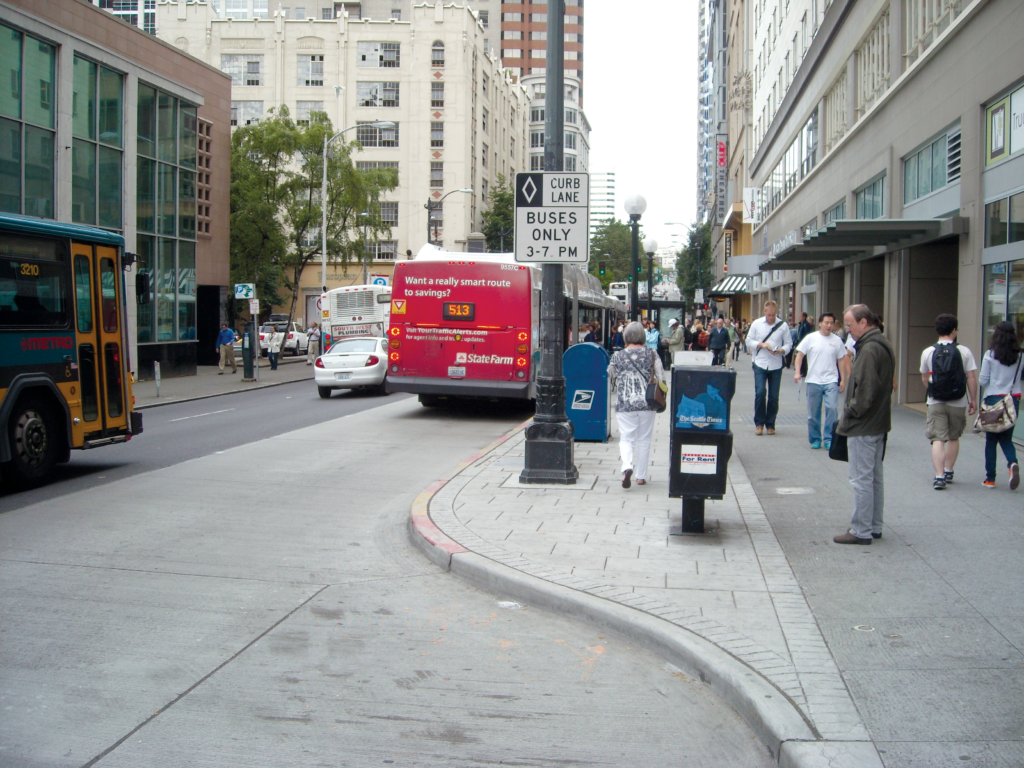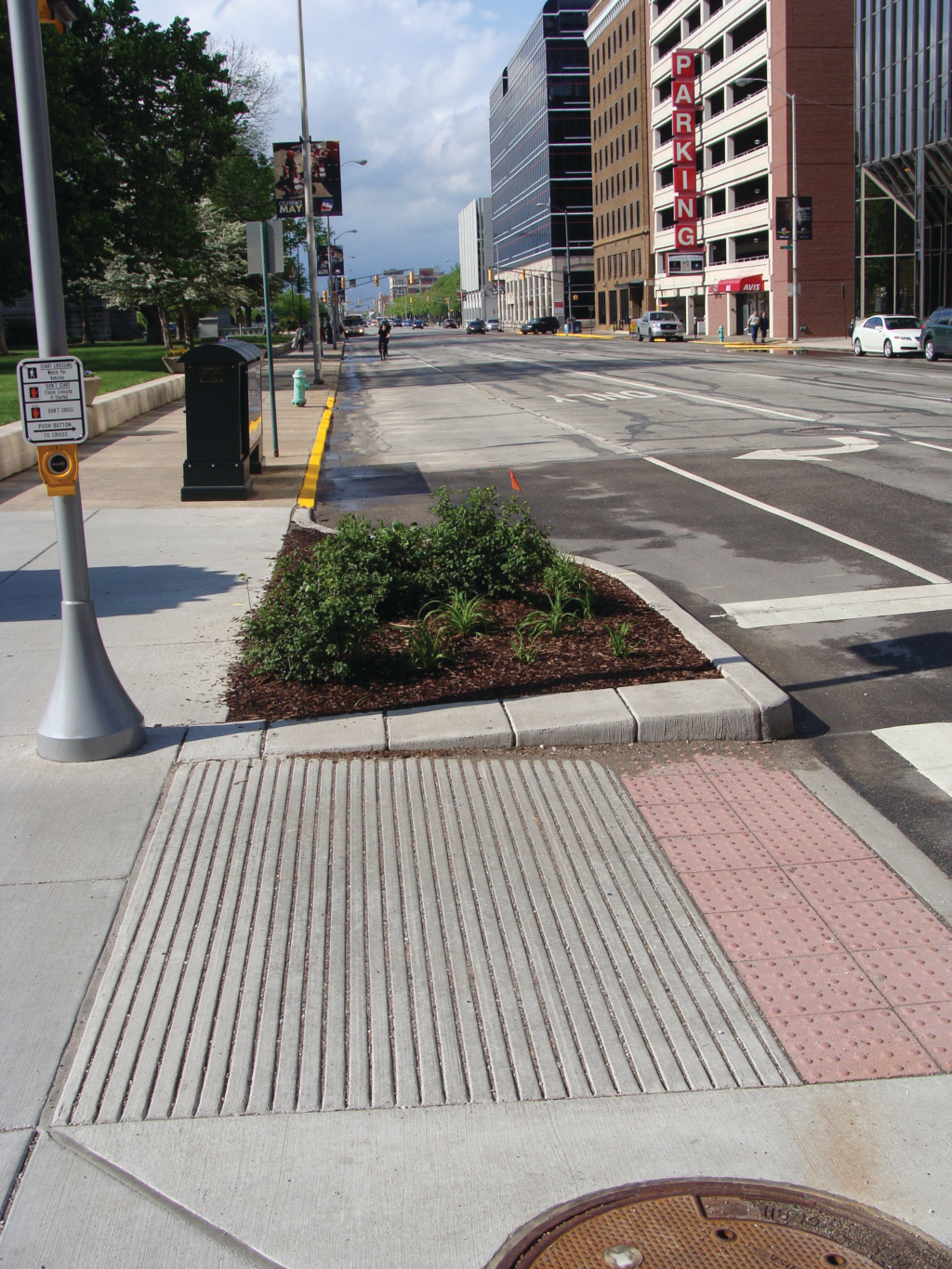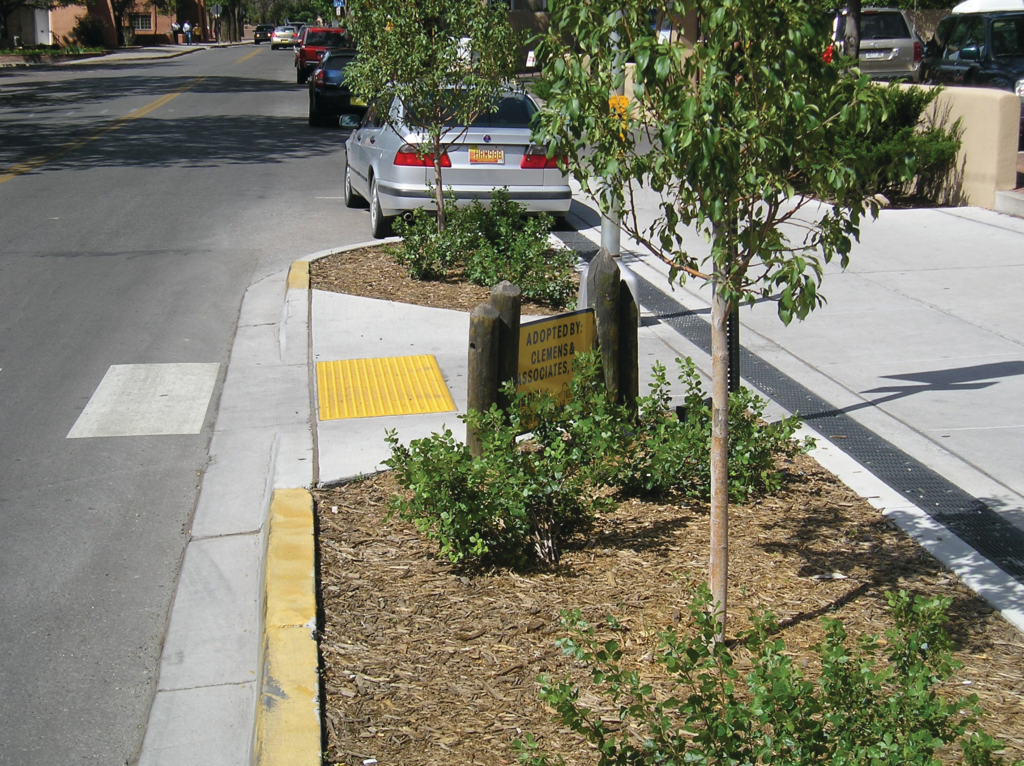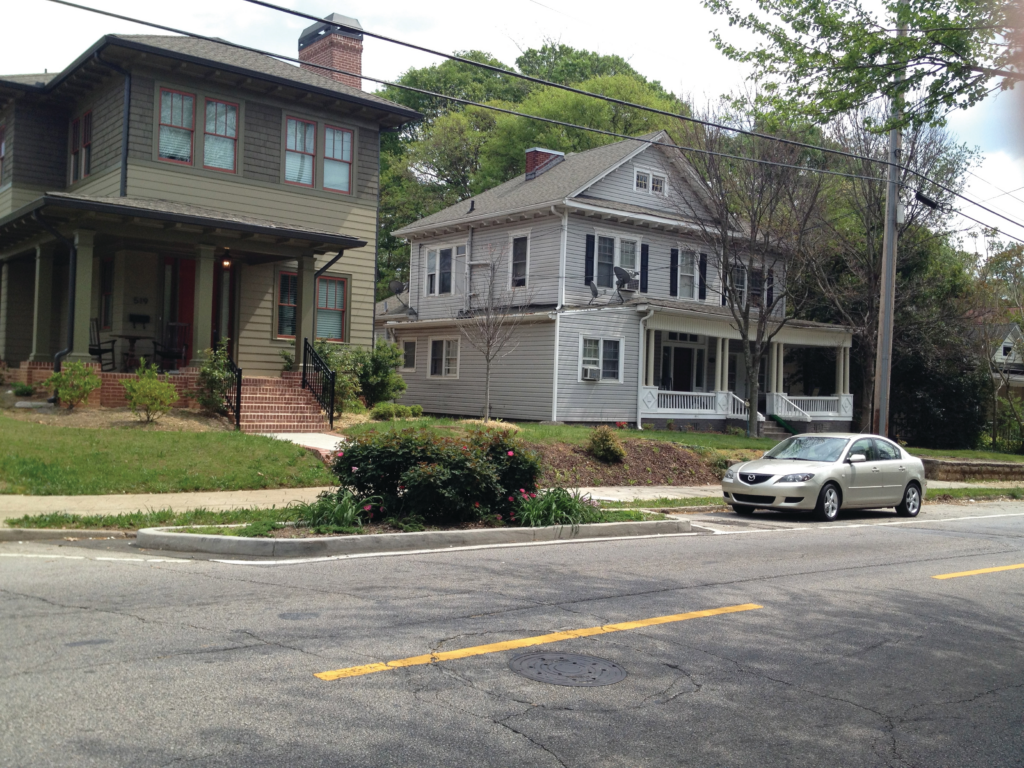Curb extensions visually and physically narrow the roadway, creating safer and shorter crossings for pedestrians while increasing the available space for street furniture, benches, plantings, and street trees. They may be implemented on downtown, neighborhood, and residential streets, large and small. Curb extensions have multiple applications and may be segmented into various sub-categories, ranging from traffic calming to bus bulbs and midblock crossings.

Application
Curb extension is an umbrella term that encompasses several different treatments and applications. These include:
- Midblock curb extensions, known as pinchpoints or chokers, which may include cut-throughs for bicyclists.
- Curb extensions used as gateways to minor streets known as neckdowns.
- Offset curb extensions that force vehicles to move laterally, known as chicanes.
- Curb extensions at bus (or transit) stops, also known as bus bulbs.
- Conventional curb extensions, which are a recommended feature where there is on-street parking.
Benefits and Considerations
Curb extensions decrease the overall width of the roadway and can serve as a visual cue to drivers that they are entering a neighborhood street or area.
Curb extensions increase the overall visibility of pedestrians by aligning them with the parking lane and reducing the crossing distance for pedestrians, creating more time for preferential treatments, such as leading pedestrian interval and transit signal priority.1
Curb extensions tighten intersection curb radii and encourage slower turning speeds.
Installation of curb extensions may require moving a fire hydrant to maintain adequate curbside access in case of a fire. In such cases, a curb extension may incur additional expense or be reoriented to avoid conflict with the hydrant.2
Used as a bus bulb, curb extensions may improve bus travel times by reducing the amount of time a bus takes to merge with traffic after boarding. Bus bulbs also help to prevent motorists from double parking in the bus stop.3
Where application of a curb extension adversely impacts drainage, curb extensions may be designed as edge islands with a 1–2-foot gap from the curb or a trench drain.
Curb extensions can be implemented using low-cost, interim materials. In such cases, curb extensions should be demarcated from the existing roadbed using temporary curbs, bollards, planters, or striping.



In this Section
- Randal S. Johnson, Pedestrian Safety Impacts of Curb Extensions: A Case Study (Corvallis: Oregon State University, 2005). ↩︎
- Relocation can be costly. The city of San Francisco estimates the expense of relocating a fire hydrant at between $40,000–70,000. Allowing hydrants to remain in place offers cost savings. NYC DOT recommends curb extensions in front of hydrants to guarantee access where illegal parking is an issue, thereby benefiting emergency services.
Street Design Manual (New York: New York City Department of Transportation, 2009), 65.
San Francisco Better Streets Plan (San Francisco, 2010).
“Crossing Enhancements,” Walking Info, accessed June 3, 2013, http://www.walkinginfo.org/engineering/crossingsenhancements.cfm.
“Traffic Calming Design Guidelines,” New York City Department of Transportation, accessed June 3, 2013, http://www.nyc.gov/html/dot/html/pedestrians/traffic-calming.shtml. ↩︎ - In San Francisco, bus bays are being replaced with bus bulbs. Analysis shows that the bus bulbs increased vehicle and bus speeds between 7–46%. Experience in a variety of cities shows that bus bulbs combined with signal priority and automobile turn restrictions may significantly improve transit operating efficiency.
Kay Fitzpatrick, Kevin M. Hall, Stephen Farnsworth, and Melisa D. Finley: TCRP Report 65: Evaluation of Bus Bulbs (Washington, D.C.: Transportation Research Board, 2001), 2. ↩︎